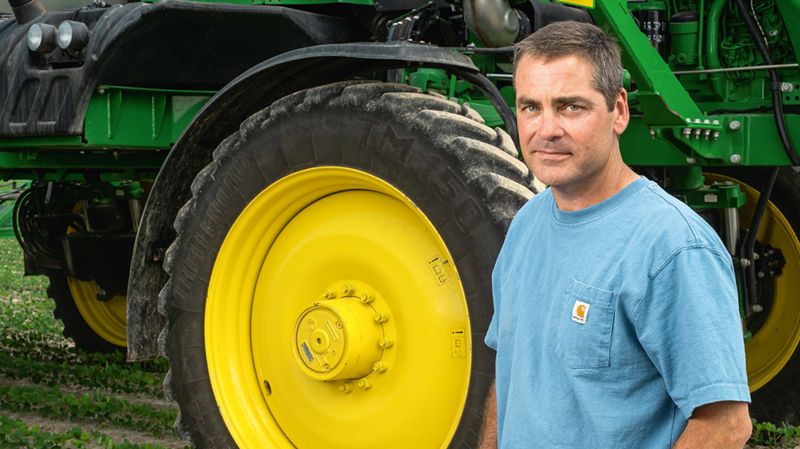A tire for all season

In the southern U.S. state of Arkansas, David Petter grows rice along with his brother Robert on a farm that includes some acreage that has been in his family for more than 100 years.
“Rice is a forgiving crop,” Petter says. “It’s great to watch it grow once you put fertilizer on it and give it some water. You can almost see it growing in front of your eyes.”
Although rice is one of the most widely grown grains in the world, it is not one of the major crops produced in the United States, and growing it takes special skills and equipment. Unlike wheat, corn and soybean acreage, rice fields remain flooded under two to four inches of water through most of their growing season. For a producer like Petter, who also grows soybeans, finding the right tires for his farm equipment can be a challenge.
Rice farmers in the United States typically use what are called rice and cane tires (cane refers to sugarcane, which is grown in much the same areas and soil conditions as rice). But Petter says in his experience, rice and cane tires tend to wear poorly and make for a rough ride. Enter Trelleborg, which worked with Petter and his tire dealer, Bobby Henard Tire Service in Brinkley, Arkansas, to develop a new hybrid tire that could work in all kinds of conditions the year round. The tire, called TM600, got its first test in August 2018, harvest time for the rice. A recent rainstorm had made the ground extremely muddy when Petter drove his tractor with the new Trelleborg tires into the field.
“Within 30 minutes I was sold on it,” he says. “It more than I could imagine hauling out 800 bushels [22 metric tons] of harvested rice in a grain cart.”
Besides serving as a workhorse in the field, the new tires made for a comfortable ride. “It just pretty much fit our bill,” Petter says. “Rice and cane tires don’t wear very well on concrete or asphalt highways and don’t ride well in the field. The hybrid tires ride smoothly. You can pull off into a muddy field knowing that they’re going to handle the mud with the implements you’re carry- ing, or you can go into a dry field knowing that the tires are going to do just what they need to do.”
The TM600 tires are designed to cast off the mud that tends to stick to conventional tires. Petter frequently surveys his fields by the use of drones, and footage from the flights shows how effectively the tires shed mud, thanks to the pitch of the treads.
Trelleborg’s hybrid tires wear extremely well, Petter found. “We have probably 500 hours on a set and you can still see the lettering on the tires,” he says. “The majority of our equipment at the farm now has Trelleborg tires on it. They’re now on seven or eight pieces of equip- ment, and I’m planning on putting them on another tractor this sum- mer. They work in all kinds of wet and dry field conditions.
Petter says Trelleborg initially approached him through a reference from Greenway Equipment, a John Deere tractor dealer in Stuttgart, Arkansas. “What they needed was someone who could be honest and tell them the truth about their prod- uct,” he says. “I was quite frank with them, telling them what I liked. I haven’t really found anything that I dislike about them yet.”
Trelleborg invited him to visit its facility in Spartanburg, South Carolina, to see how the tires are made. It was his first-ever visit to a tire manufacturing facility, and he was impressed to see the type of tire he uses on his sprayer as it came off the assembly line, still warm from the forming press.
“It was a great trip for seeing just what they go through in developing and manufacturing a tire,” he says.
Convinced that Trelleborg was on to something, Petter told his financial adviser to buy him some shares of Trelleborg on the Stockholm Stock Exchange. If Trelleborg is as successful as he expects it to be, he looks forward to receiving some nice dividend checks. “And if not,” he says, “I’ll still have a good set of tires.”